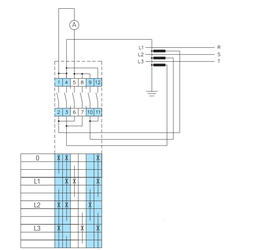D
Designmen90
Hello everyone!
I have problem with ammeter switch from attachment. Here is connection diagram, and everything looks fine. But, if we look carefully, we will see that ground and L3 are short connected via 3-4 terminals, when we put switch in L1 position. So, my question is, how it's possible, it looks like short-circuit?
I have problem with ammeter switch from attachment. Here is connection diagram, and everything looks fine. But, if we look carefully, we will see that ground and L3 are short connected via 3-4 terminals, when we put switch in L1 position. So, my question is, how it's possible, it looks like short-circuit?









